Ex: http://www.counter-currents.com/
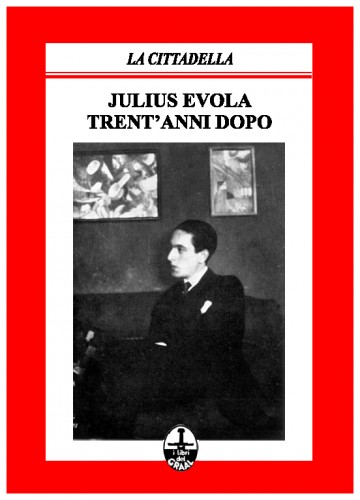 Since the rise of physical anthropology, the definition of the term “race” has undergone several changes. In 1899, William Z. Ripley stated that, “Race, properly speaking, is responsible only for those peculiarities, mental or bodily, which are transmitted with constancy along the lines of direct physical descent.”[1]
Since the rise of physical anthropology, the definition of the term “race” has undergone several changes. In 1899, William Z. Ripley stated that, “Race, properly speaking, is responsible only for those peculiarities, mental or bodily, which are transmitted with constancy along the lines of direct physical descent.”[1]
In 1916, Madison Grant described it as the “immutability of somatological or bodily characters, with which is closely associated the immutability of psychical predispositions and impulses.”[2] He was echoed a decade later by German anthropologist Hans F. K. Günther, who in his Racial Elements of European History said, “A race shows itself in a human group which is marked off from every other human group through its own proper combination of bodily and mental characteristics, and in turn produces only its like.”[3]
According to the English-born Canadian evolutionary psychologist J. Philippe Rushton:
Each race (or variety) is characterized by a more or less distinct combination of inherited morphological, behavioral, physiological traits. . . . Formation of a new race takes place when, over several generations, individuals in one group reproduce more frequently among themselves than they do with individuals in other groups. This process is most apparent when the individuals live in diverse geographic areas and therefore evolve unique, recognizable adaptations (such as skin color) that are advantageous in their specific environments.[4]
These examples indicate that, within the academic context (where those who still believe in “race” are fighting a losing battle with the hierophants of cultural anthropology), a race is simply a human group with distinct common physical and mental traits that are inherited.
Among white racialists, where race has more than a merely scientific importance, a deeper dimension was added to the concept: that of the spirit. In The Decline of the West, Oswald Spengler set forth the idea of the Apollinian, Faustian, and Magian “soul forms,” which can be understood as spiritual racial types.[5] In his highly influential Spenglerian tome Imperium, Francis Parker Yockey elaborated this notion, asserting that while there are genetically related individuals within any particular human group, race itself is spiritual: it is a deeply felt sense of identity connected with a drive to perpetuate not just genes, but a whole way of life. “Race impels toward self-preservation, continuance of the cycle of generations, increase of power.”[6] Spiritual race is a drive toward a collective destiny.
The spiritual side of race, however, was never systematically explained to the same extent as the physical. Its existence was, rather, merely suggested and taken for granted. It was only in the writings of the much overlooked Italian Radical Traditionalist and esotericist Julius Evola that the spiritual dimension was finally articulated in detail. One who has studied race from the biological, psychological, and social perspectives should turn to Evola’s writings for a culminating lesson on the subject. Evola’s writings provide a wealth of information that one cannot get elsewhere. Through a careful analysis of ancient literature and myths, along with anthropology, biology, history, and related subjects, Evola has pieced together a comprehensive explanation of the racial spirit.
My purpose here is simply to outline Evola’s doctrine of race. Since Evola’s life and career have been thoroughly examined elsewhere,[7] the only biographical fact relevant here is that Evola’s thoughts on race were officially adopted as policy by Mussolini’s Fascist party in 1942.[8]
Body and Mind
Evola’s precise definition of “race” is similar to Yockey’s: it is an inner essence that a person must “have”; this will be explained further below. In the meantime, a good starting point is Evola’s understanding of distinct human groups.
Evola agrees with the physical anthropologists that there are distinct groups with common physical traits produced by a common genotype: “the external form . . . which, from birth to birth, derives from the ‘gene’ . . . is called phenotype.”[9] He refers to these groups as “races of the body,” and concurs with Günther that suitable examples include the Nordic, Mediterranean, East Baltic, Orientalid, Negroid, and many others.[10]
Evola decribes the “race of the soul” as the collective mental and behavioral traits of a human stock, and the outward “style” through which these are exhibited. Every race has essentially the same mental predispositions; all human peoples, for example, desire sexual satisfaction from a mate. However, each human stock manifests these inner instincts externally in a different way, and it is this “style,” as Evola terms it, which is the key component of the “race of the soul.”
To illustrate this point, compare the Spartan strategos (Nordic soul) to the Carthaginian shofet (Levantine soul)[11]: the Spartan considers it heroic to fight hand-to-hand with shield and spear and cowardly to attack from a distance with projectiles, whereas the Carthaginian finds it natural to employ elephants and grand siege equipment to utterly shock and scatter his enemies for an expedient victory.
The names of these races of the soul correspond to those of the body, hence a Nordic soul, a Mediterranean soul, Levantine soul, etc. Evola devotes an entire chapter in Men Among the Ruins to comparing the “Nordic” or “Aryo-Roman” soul to the “Mediterranean.” The Nordic soul is that of “‘the race of the active man,’ of the man who feels that the world is presented to him as material for possession and attack.”[12] It is the character of the quintessential “strong and silent type”:
Among them we should include self-control, an enlightened boldness, a concise speech and determined and coherent conduct, and a cold dominating attitude, exempt from personalism and vanity. . . . The same style is characterized by deliberate actions, without grand gestures; a realism that is not materialism, but rather love for the essential . . . the readiness to unite, as free human beings and without losing one’s identity, in view of a higher goal or for an idea.[13]
Evola also quotes Helmuth Graf von Moltke (the Elder) on the Nordic ethos: “Talk little, do much, and be more than you appear to be.”[14]
The Mediterranean soul is the antithesis of the Nordic. This sort of person is a vain, noisy show-off who does things just to be noticed. Such a person might even do great deeds sometimes, but they are not done primarily for their positive value, but merely to draw attention. In addition, the Mediterranean makes sexuality the focal point of his existence.[15] The resemblance of this picture to the average narcissistic, sex- and celebrity-obsessed American of today—whether genetically Nordic or Mediterranean—is striking. One need only watch American Idol or browse through the profiles of Myspace.com to see this.
Race of the Spirit
The deepest and therefore most complicated aspect of race for Evola is that of the “spirit.” He defines it as a human stock’s “varying attitude towards the spiritual, supra-human, and divine world, as expressed in the form of speculative systems, myths, and symbols, and the diversity of religious experience itself.”[16] In other words, it is the manner in which different peoples interact with the gods as conveyed through their cultures; a “culture” would include rituals, temple architecture, the role of a priesthood (or complete lack thereof), social hierarchy, the status of women, religious symbolism, sexuality, art, etc. This culture, or worldview, is not simply the product of sociological causes, however. It is the product of something innate within a stock, a “meta-biological force, which conditions both the physical and the psychical structures” of its individual members.[17]
The “meta-biological force” in question has two different forms. The first corresponds to an id or a collective unconscious, a sort of group mind-spirit that splinters off into individual spirits and enters a group member’s body upon birth. Evola describes it as “subpersonal” and belonging “to nature and the infernal world.”[18] Most ancient peoples, as he explains, depicted this force symbolically in their myths and sagas; examples would include the animal totems of American aborigines, the ka of the Pharaonic Egyptians, or the lares of the Latin peoples. The “infernal” nature of the latter example was emphasized by the fact that the lares were believed to be ruled over by an underground deity named Mania.[19] When a person died, this metaphysical element would be absorbed back into the collective from whence it came, only to be recycled into another body, but devoid of any recollection of its former life.
The second form, superior to the first, is one that does not exist in every stock naturally, or in every member of a given stock; it is an otherworldly force that must be drawn into the blood of a people through the practice of certain rites. This action corresponds to the Hindu notion of “realizing the Self,” or experiencing a oneness with the divine source of all existence and order (Brahman). Such a task can only be accomplished by a gifted few, who by making this divine connection undergo an inner transformation. They become aware of immutable principles, in the name of which they go on to forge their ethnic kin into holistic States—microcosmic versions of the transcendent principle of Order itself. Thus, the Brahmins and Kshatriyas of India, the patricians of Rome, and the samurai of Japan had a “race of the spirit,” which is essential to “having race” itself. Others may have the races of body and soul, but race of the spirit is race par excellence.
Transcendence is experienced differently by different ethnic groups. As a result, different understandings of the immutable arise across the world; from these differences emerge several “races of the spirit.” Evola focuses on two in particular. The first is the “telluric spirit” characterized by a deep “connection to the soil.” This race worships the Earth in its various cultural manifestations (Cybele, Gaia, Magna Mater, Ishtar, Inanna, etc.) and a consort of “demons.” Their view of the afterlife is fatalistic: the individual spirit is spawned from the Earth and then returns to the Earth, or to the infernal realm of Mania, upon death, with no other possibility.[20] Their society is matriarchal, with men often taking the last names of their mothers and familial descent being traced through the mother. In addition, women often serve as high priestesses. The priesthood, in fact, is given preeminence, whereas the aristocratic warrior element is subordinated, if it exists at all.
This race has had representatives in all the lands of Europe, Asia, and Africa that were first populated by pre-Aryans: the Iberians, Etruscans, Pelasgic-Minoans, Phoenicians, the Indus Valley peoples, and all others of Mediterranean, Oriental, and Negroid origin. The invasions of Aryan stock would introduce to these peoples a diametrically opposed racial spirit: the “Solar” or “Olympian” race.
The latter race worships the heavenly god of Order, manifested as Brahman, Ahura-Mazda, Tuisto (the antecedent of Odin), Chronos, Saturn, and the various sun deities from America to Japan. Its method of worship is not the self-prostration and humility practiced by Semites, or the ecstatic orgies of Mediterraneans, but heroic action (for the warriors) and meditative contemplation (for the priests), both of which establish a direct link with the divine. Olympian societies are hierarchical, with a priestly caste at the top, followed by a warrior caste, then a caste of tradesmen, and finally a laboring caste. The ruler himself assumes the dual role of priest and warrior, which demonstrates that the priesthood did not occupy the helm of society as they did among telluric peoples. Finally, the afterlife was not seen as an inescapable dissolution into nothingness, but as one of two potential conclusions of a test. Those who live according to the principles of their caste, without straying totally from the path, and who come to “realize the Self,” experience a oneness with God and enter a heavenly realm that is beyond death. Those who live a worthless, restless existence that places all emphasis on material and physical things, without ever realizing the presence of the divine Self within all life, undergoes the “second death,”[21] or the return to the collective racial mind-spirit mentioned earlier.
The Olympian race has appeared throughout history in the following forms: in America as the Incas; in Europe and Asia as the Indo-European speaking peoples; in Africa as the Egyptians; and in the Far East as the Japanese. Generally, this race of the spirit has been carried by waves of phenotypically Nordic peoples, which will be explained further below.
Racial Genesis
Of considerable importance to Evola’s racial worldview is his explanation of human history. Contrary to the views of most physical anthropologists and archaeologists, and even many intellectual white racialists, humanity did not evolve from a primitive, simian ancestor, and then branch off into different genetic populations. Evolution itself is a fallacy to Evola, who believed it to be rooted in the equally false ideology of progressivism: “We do not believe that man is derived from the ape by evolution. We believe that the ape is derived from man by involution. We agree with De Maistre that savage peoples are not primitive peoples, but rather the degenerating remnants of more ancient races that have disappeared.”[22]
Evola argues in many of his works, like Bal Ganghadar Tilak and René Guénon before him, that the Aryan peoples of the world descend from a race that once inhabited the Arctic. In “distant prehistory” this land was the seat of a super-civilization—“super” not for its material attainments, but for its connection to the gods—that has been remembered by various peoples as Hyperborea, Airyana-Vaego, Mount Meru, Tullan, Eden, and other labels; Evola uses the Hellenic rendition “Hyperborea” more than the rest, probably to remain consistent and avoid confusion among his readers. The Hyperboreans themselves, as he explains, were the original bearers of the Olympian racial spirit.
Due to a horrible cataclysm, the primordial seat was destroyed, and the Hyperboreans were forced to migrate. A heavy concentration of refugees ended up at a now lost continent somewhere in the Atlantic, where they established a new civilization that corresponded to the “Atlantis” of Plato and the “Western land” of the Celts and other peoples. History repeated itself, and ultimately this seat was also destroyed, sending forth an Eastward-Westward wave of migrants. As Evola notes, this particular wave “[corresponded] to Cro-Magnon man, who made his appearance toward the end of the glacial age in the Western part of Europe,”[23] thus lending some historical evidence to his account. This “pure Aryan” stock would ultimately become the proto-Nordic race of Europe, which would then locally evolve into the multitude of Nordic stocks who traveled across the world and founded the grandest civilizations, from Incan Peru to Shintoist Japan.
Evola spends less time tracing the genesis of nonwhite peoples, which he consistently refers to as “autochthonous,” “bestial,” and “Southern” races. In his seminal work Revolt Against the Modern World, he says that the “proto-Mongoloid and Negroid races . . . probably represented the last residues of the inhabitants of a second prehistoric continent, now lost, which was located in the South, and which some designated as Lemuria.”[24] In contrast to the superior Nordic-Olympians, these stocks were telluric worshippers of the Earth and its elemental demons. Semites and other mixed races, Evola asserts, are the products of miscegenation between Atlantean settlers and these Lemurian races. Civilizations such as those of the pre-Hellenes, Mohenjo-Daro, pre-dynastic Egyptians, and Phoenicians, among countless others, were founded by these mixed peoples.
Racialism in Practice
Racialist movements from National Socialist Germany to contemporary America have tended to emphasize preserving physical racial types. While phenotypes were important to Evola, his foremost goal for racialism was to safeguard the Olympian racial spirit of European man. It was from this spirit that the greatest Indo-European civilizations received the source of their leadership, the principles around which they centered their lives, and thus the wellspring of their vitality. While de Gobineau, Grant, and Hitler argued that blood purity was the determining factor in the life of a civilization, Evola contended that “Only when a civilization’s ‘spiritual race’ is worn out or broken does its decline set in.”[25] Any people who manages to maintain a physical racial ideal with no inner spiritual substance is a race of “very beautiful animals destined to work,”[26] but not destined to produce a higher civilization.
The importance of phenotypes is described thusly: “The physical form is the instrument, expression, and symbol of the psychic form.”[27] Evola felt that it would only be possible to discover the desired spiritual type (Olympian) through a systematic examination of physical types. Even to Evola, a Sicilian baron, the best place to look in this regard was the “Aryan or Nordic-Aryan body”; as he mentions on several occasions, it was, after all, this race that carried the Olympian Tradition across the world. He called this process of physical selection “racism of the first degree,” which was the first of three stages.
Once the proper Nordic phenotype was identified, various “appropriate” tests comprising racism of the second and third degrees would be implemented to determine a person’s racial soul and spirit.[28] Evola never laid out a specific program for this, but makes allusions in his works to assessments in which a person’s political and racial opinions would be taken into account. In his Elements of Racial Education, he asserts that “The one who says yes to racism is one in which race still lives,” and that one who has race is intrinsically against democratic ideals. He also likens true racism to the “classical spirit,” which is rooted in “exaltation of everything which has form, face, and individuation, as opposed to what is formless, vague, and undifferentiated.”[29] Keep in mind that for Evola, “having race” is synonymous with having the “Olympian race” of the spirit. Upon discovering a mentality that fits the criteria for soul and spirit, a subsequent education of “appropriate disciplines” would be carried out to ensure that the racial spirit within this person is “maintained and developed.” Through such trials, conducted on a wide scale, a nation can determine those people within it who embody the racial ideal and the capacity for leadership.
Protecting and developing the Nordic-Olympians was primary for Evola, but his racialism had other goals. He sought to produce the “unified type,” or a person in whom the races of body, soul, and spirit matched one another and worked together harmoniously. For example: “A soul which experiences the world as something before which it takes a stand actively, which regards the world as an object of attack and conquest, should have a face which reflects by determined and daring features this inner experience, a slim, tall, nervous, straight body—an Aryan or Nordic-Aryan body.”[30]
This was important because “it is not impossible that physical appearances peculiar to a given race may be accompanied by the psychic traits of a different race.”[31] To Evola, if people chose mates on the basis of physical features alone, there is a good chance that various mental and spiritual elements would become intermingled and generate a dangerous confusion; there would be Nordics with Semitic mental characteristics and Asiatic spiritual predispositions, Alpines with Nordic proclivities and fatalistic religious attitudes, and so on. Such a mixture was what Evola considered to be a mongrel type, in whom “cosmopolitan myths of equality” become manifested mentally, thus paving the way for the beasts of democracy and communism to permeate the nation and take hold.
Evola cared more about the aristocratic racial type, but he did not want the populace to become a bastardized mass: “We must commit ourselves to the task of applying to the nation as a whole the criteria of coherence and unity, of correspondence between outer and inner elements.”[32] If the aristocracy had as its subjects a blob of spiritless, internally broken people, the nation would have no hope. For the Fascist state, he promoted an educational campaign to ensure that the peoples of Italy selected their mates appropriately, looking for both appearances and behavior; non-Europeans would of course be excluded entirely. The school system would play its role, as would popular literature and films.[33]
Another way to develop the “inner race” is through combat. Not combat in the modern sense of pressing a button and instantly obliterating a hundred people, but combat as it unfolds in the trenches and on the battlefield, when it is man against man, as well as man against his inner demons. Evola writes “the experience of war, and the instincts and currents of deep forces which emerge through such an experience, give the racial sense a right, fecund direction.”[34] Meanwhile, the comfortable bourgeois lifestyle and its pacifist worldview lead to the crippling of the inner race, which will ultimately become extinguished if external damage is thenceforth inflicted (via intermixing with inferior elements).
Conclusion
American racialists have much to gain from an introduction to Evola’s thoughts on race. In the American context, racialism is virtually devoid of any higher, spiritual element; many racialists even take pride in this. There are, without a doubt, many racialists who consider themselves devout Catholics or Protestants, and they may even be so. However, the reality of race as a spiritual phenomenon is given little attention, if any at all. For whatever reason, American racialists are convinced that the greatness of Western civilization, evinced by its literature, architecture, discoveries, inventions, conquests, empires, political treatises, economic achievements, and the like, lie solely in the mental characteristics of its people. For instance, the Romans erected the coliseum, the English invented capitalism, and the Greeks developed the Pythagorean theorem simply because they all had high IQs. When one compares the achievements of different Western peoples, and those of the West to the East, however, this explanation appears inadequate.
Intelligence alone cannot explain the different styles that are conveyed through the culture forms of different peoples; the Greeks’ Corinthian order on the one hand, and the Arabs’ mosques and minarets on the other, are not results of mere intellect. Sociological explanations do not work either; the Egyptians and the Mayans lived in vastly different environments, yet both evoked their style through pyramids and hieroglyphs. The only explanation for these phenomena is that there is something deeper within a folk, something deeper and more powerful than bodily structures and mental predispositions. As Evola elucidates through his multitude of works—themselves the result of intense study of ancient and modern texts from every discipline imaginable—race has a “super-biological” aspect: a spiritual force. Ancient peoples understood this reality and conveyed it through their myths: the Romans used the lares; the Mayans used totemic animal symbols; the Persians used the fravashi, which were synonymous with the Nordic valkyries[35]; the Egyptians used the ka; and the Hindus in the Bhagavad-Gita used Lord Krishna.
To better understand the spiritual side of race, the best place to look is Julius Evola. Through his works, which have greatly influenced the European New Right, Evola dissects and examines the concept of the Volksgeist, or racial spirit. It is the supernatural force that animates the bodies of a given race and stimulates the wiring in their brains. It is the substance from which cultures arise, and from which an aristocracy materializes to raise those cultures to higher civilizations. Without it, a race is simply a tribe of automatons that feed and copulate:
When the super biological element that is the center and the measure of true virility is lost, people can call themselves men, but in reality they are just eunuchs and their paternity simply reflects the quality of animals who, blinded by instinct, procreate randomly other animals, who in turn are mere vestiges of existence.[36]
Nowhere would Evola’s racial ideas be more valuable than in the United States, a land in which the idea of transcendent realities is mocked, if not violently attacked. Even American racialists, who nostalgically look back to “better” times when people were more “traditional,” are completely unaware of how the Aryan Tradition, in its purest form, understands the concept of race. Many of these people claim to be “Aryan” while simultaneously calling themselves “atheist” or “agnostic,” although in ancient societies, one needed to practice the necessary religious rites and undergo certain trials before having the right to style onself an Aryan. Hence the need for these “atheist Aryans” to become more familiar with Julius Evola.
Notes
1. William Z. Ripley, The Races of Europe: A Sociological Study (New York: D. Appleton and Co., 1899), 1.
2. Madison Grant, The Passing of the Great Race (North Stratford, N.H.: Ayer Company Publishers, Inc., 2000), xix.
3. H. F. K. Günther, The Racial Elements of European History, trans. G. C. Wheeler (Uckfield, Sussex, UK: Historical Review Press, 2007), 9.
4. J. Philippe Rushton, “Statement on Race as a Biological Concept,” November 4, 1996, http://www.nationalistlibrary.com/index2.php?option=com_c...
5. Oswald Spengler, The Decline of the West, 2 vols., trans. Charles Francis Atkinson (New York: Knopf, 1926 & 1928), vol. 1, chs. 6 and 9; cf. vol. 2, ch. 5, “Cities and Peoples. (B) Peoples, Races, Tongues.”
6. Francis Parker Yockey, Imperium (Newport Beach, Cal.: Noontide Press, 2000), 293.
7. See the Introduction to Julius Evola, Men Among the Ruins, trans. Guido Stucco, (Rochester, Vt.: Inner Traditions International, 2002).
8. Evola, Men Among the Ruins, 47.
9. Julius Evola, The Elements of Racial Education, trans. Thompkins and Cariou (Thompkins & Cariou, 2005), 11.
10. Evola, Elements of Racial Education, 34–35.
11. For more on the Levantine “race of the soul” see Elements of Racial Education, 35.
12. Evola, Elements of Racial Education, 35.
13. Evola, Men Among the Ruins, 259.
14. Evola, Men Among the Ruins, 262.
15. Evola, Men Among the Ruins, 260. Evola’s descriptions of Nordic and Mediterranean proclivities show the strong influence of Günther’s The Racial Elements of European History.
16. Evola, Elements of Racial Education, 29.
17. Julius Evola, Metaphysics of War: Battle, Victory & Death in the World of Tradition, ed. John Morgan and Patrick Boch (Aarhus, Denmark: Integral Tradition Publishing, 2007), 63.
18. Julius Evola, Revolt Against the Modern World, trans. Guido Stucco (Rochester, Vt.: Inner Traditions International, 1995), 48.
19. Evola, Revolt Against the Modern World, 48.
20. Evola, Elements of Racial Education, 40.
21. Evola, Revolt Against the Modern World, 48.
22. Julius Evola, Eros and the Mysteries of Love, trans. anonymous (Rochester, Vt.: Inner Traditions International, 1991), 9.
23. Evola, Revolt Against the Modern World, 195.
24. Evola, Revolt Against the Modern World, 197.
25. Evola, Revolt Against the Modern World, 58.
26. Evola, Revolt Against the Modern World, 170.
27. Evola, Elements of Racial Education, 30.
28. Julius Evola, “Race as a Builder of Leaders,” trans. Thompkins and Cariou, http://thompkins_cariou.tripod.com/id7.html.
29. Evola, The Elements of Racial Education, 14, 15.
30. Evola, The Elements of Racial Education, 31.
31. Evola, “Race as a Builder of Leaders.”
32. Evola, Elements of Racial Education, 33.
33. Evola, Elements of Racial Education, 25.
34. Evola, Metaphysics of War, 69.
35. Evola, Metaphysics of War, 34.
36. Evola, Revolt Against the Modern World, 170.
Source: TOQ, vol.9, no. 2 (Spring 2009).



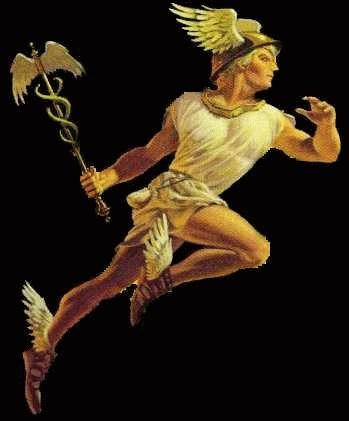 In het slotartikel van ‘Het cultureel leven tijdens de bezetting’ (Diogenes, nr. 1-2, nov. ’90, blz. 57), schreef onze vriend Henri-Floris Jespers dat ik in het interview van de Heer Van de Vijvere te voorschijn gekomen was als een ‘ijverige en openlijke ultra’ (sic!). Niets is minder waar. Ik een ‘ultra’? Ik wens dit hier, zo mogelijk, te weerleggen. Eerst en vooral: in een passage van zijn artikel onderstreept H.F. Jespers dat werken van zijn grootvader Floris Jespers door de Brusselse Propaganda-Abteilung, niettegenstaande haar mild standpunt tegenover de zogenaamde Belgische ‘entartete Kunst’ gecensureerd werden. En hij citeert: ‘Joods meisje’ en ‘Joodse Bruiloft’. Dergelijke titels zijn, helaas, te beschouwen als naïeve provocatie! Hadden beide werken als titel meegekregen ‘Antwerps meisje’ en ‘Antwerpse bruiloft’, zou de Propaganda-Abteilung er voorzeker geen graten in gezien hebben… Laten we niet vergeten dat nazi-idioten onze grote Rembrandt als ‘entartet’ beschouwden omdat hij o.m. ‘Het Joods bruidje’ geschilderd heeft, alsmede portretten van rabbijnen die in de buurt van zijn Jodenbreestraat rondliepen in schilderachtige Oosterse gewaden… De heren van de Brusselse Propaganda-Abteilung, het dient gezegd te worden, interesseerden zich meer voor ‘wijntje en Trijntje’ dan aan censuur!
In het slotartikel van ‘Het cultureel leven tijdens de bezetting’ (Diogenes, nr. 1-2, nov. ’90, blz. 57), schreef onze vriend Henri-Floris Jespers dat ik in het interview van de Heer Van de Vijvere te voorschijn gekomen was als een ‘ijverige en openlijke ultra’ (sic!). Niets is minder waar. Ik een ‘ultra’? Ik wens dit hier, zo mogelijk, te weerleggen. Eerst en vooral: in een passage van zijn artikel onderstreept H.F. Jespers dat werken van zijn grootvader Floris Jespers door de Brusselse Propaganda-Abteilung, niettegenstaande haar mild standpunt tegenover de zogenaamde Belgische ‘entartete Kunst’ gecensureerd werden. En hij citeert: ‘Joods meisje’ en ‘Joodse Bruiloft’. Dergelijke titels zijn, helaas, te beschouwen als naïeve provocatie! Hadden beide werken als titel meegekregen ‘Antwerps meisje’ en ‘Antwerpse bruiloft’, zou de Propaganda-Abteilung er voorzeker geen graten in gezien hebben… Laten we niet vergeten dat nazi-idioten onze grote Rembrandt als ‘entartet’ beschouwden omdat hij o.m. ‘Het Joods bruidje’ geschilderd heeft, alsmede portretten van rabbijnen die in de buurt van zijn Jodenbreestraat rondliepen in schilderachtige Oosterse gewaden… De heren van de Brusselse Propaganda-Abteilung, het dient gezegd te worden, interesseerden zich meer voor ‘wijntje en Trijntje’ dan aan censuur!
 del.icio.us
del.icio.us
 Digg
Digg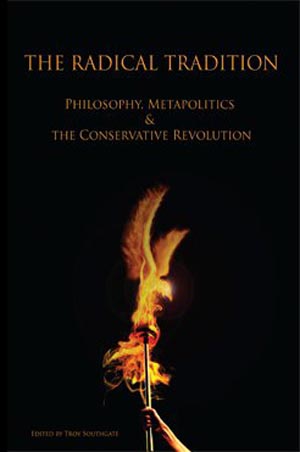
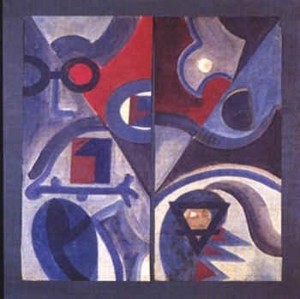

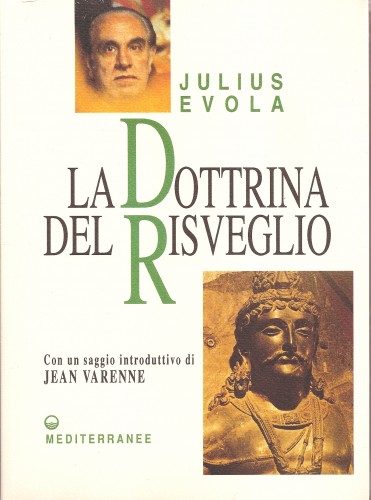
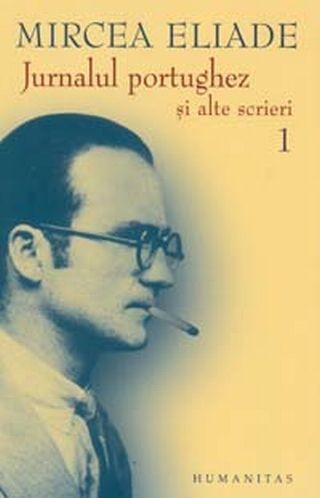 Die State University of New York Press hat die englische Übersetzung des „portugiesischen Tagebuchs“ (Jurnalul portughez) von Mircea Eliade – er war von 1941-45 rumänischer Botschafter in Lissabon – veröffentlicht:
Die State University of New York Press hat die englische Übersetzung des „portugiesischen Tagebuchs“ (Jurnalul portughez) von Mircea Eliade – er war von 1941-45 rumänischer Botschafter in Lissabon – veröffentlicht: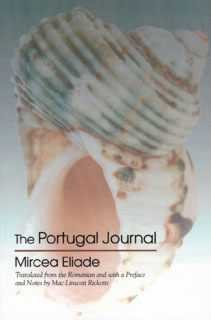 Evola hat 1942 „Il filosofo mascherato“, die Besprechung eines Buches von Maxime Leroy über Descartes’ deviantes Rosenkreuzertum und seine Rolle im Rahmen der Gegeninitiation, in „La Vita Italiana“ veröffentlicht. (Deutsche Übersetzung: Der Philosoph mit der Maske, in: Kshatriya-Rundbrief, Nr. 7, 2000) Schmitts „Leviathan“ besprach Evola bereits 1938 in „La Vita Italiana“ (nachgedruckt in zwei weiteren wichtigen italienischen Zeitschriften). Evola kommt im übrigen in Eliades Tagebuch laut Index nicht vor.
Evola hat 1942 „Il filosofo mascherato“, die Besprechung eines Buches von Maxime Leroy über Descartes’ deviantes Rosenkreuzertum und seine Rolle im Rahmen der Gegeninitiation, in „La Vita Italiana“ veröffentlicht. (Deutsche Übersetzung: Der Philosoph mit der Maske, in: Kshatriya-Rundbrief, Nr. 7, 2000) Schmitts „Leviathan“ besprach Evola bereits 1938 in „La Vita Italiana“ (nachgedruckt in zwei weiteren wichtigen italienischen Zeitschriften). Evola kommt im übrigen in Eliades Tagebuch laut Index nicht vor. 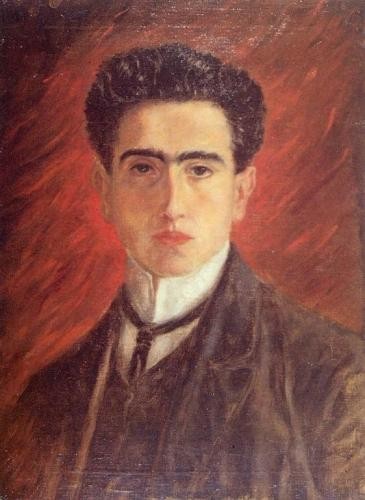


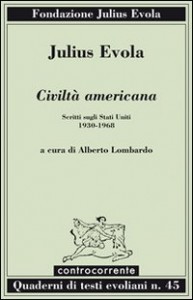 Recentemente la Fondazione Julius Evola ha curato la seconda edizione (dopo quella del 1983) dell’antologia di testi evoliani dedicati alla civiltà statunitense, a cura di Alberto Lombardo, intitolata «Civiltà americana».
Recentemente la Fondazione Julius Evola ha curato la seconda edizione (dopo quella del 1983) dell’antologia di testi evoliani dedicati alla civiltà statunitense, a cura di Alberto Lombardo, intitolata «Civiltà americana».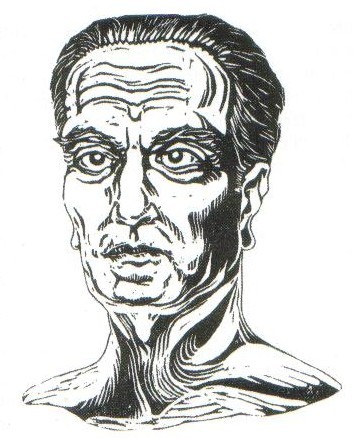



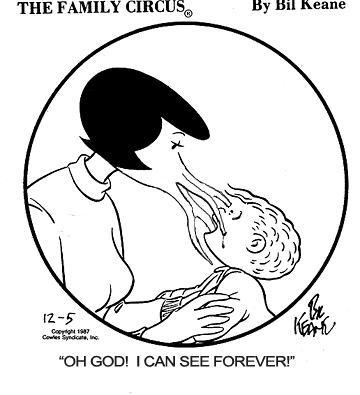

 In questo articolo prenderemo in considerazione l’importanza rivestita dalla
In questo articolo prenderemo in considerazione l’importanza rivestita dalla 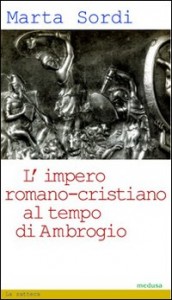
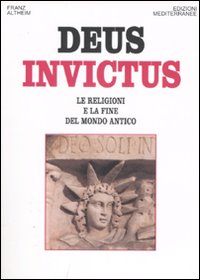
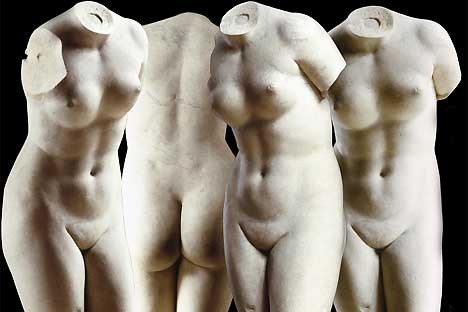
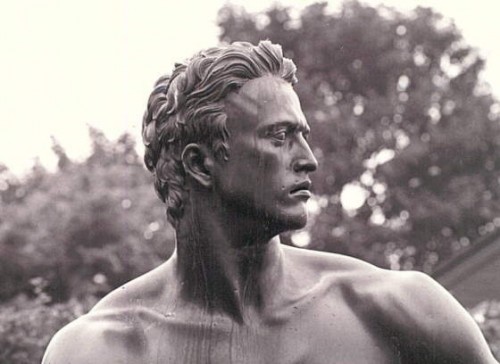


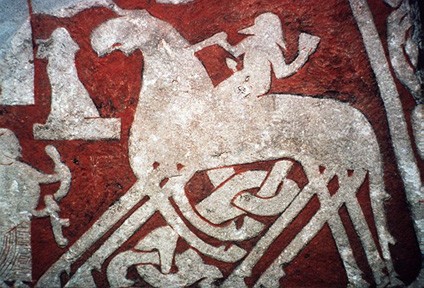
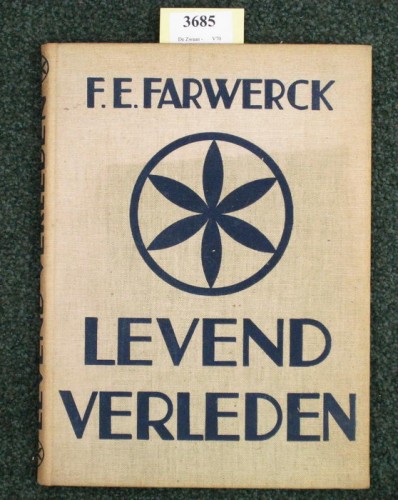
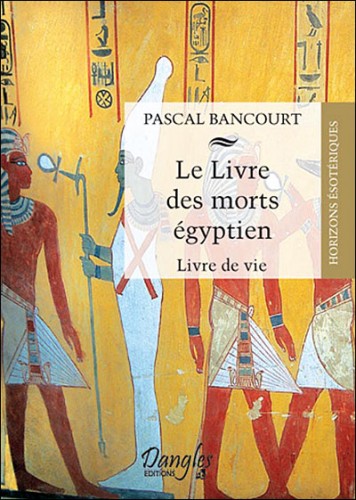
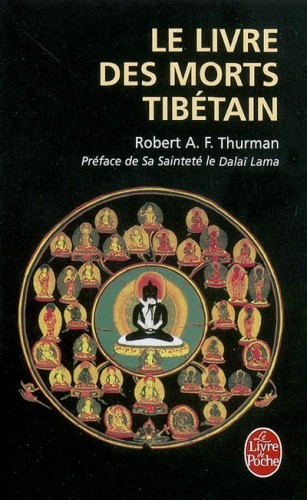 Nevertheless, there are many parallel points between the two texts dealing with the liberating identifications. Just as in the Tibetan ritual the destruction of the appearance of distinct entities, which all things perceived in the experiences of the other world may acquire, is indicated as a means of liberation, so in the Egyptian text formulae are repeated by means of which the soul of the dead affirms and realizes its identity with the divine figures.
Nevertheless, there are many parallel points between the two texts dealing with the liberating identifications. Just as in the Tibetan ritual the destruction of the appearance of distinct entities, which all things perceived in the experiences of the other world may acquire, is indicated as a means of liberation, so in the Egyptian text formulae are repeated by means of which the soul of the dead affirms and realizes its identity with the divine figures.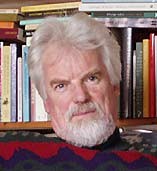
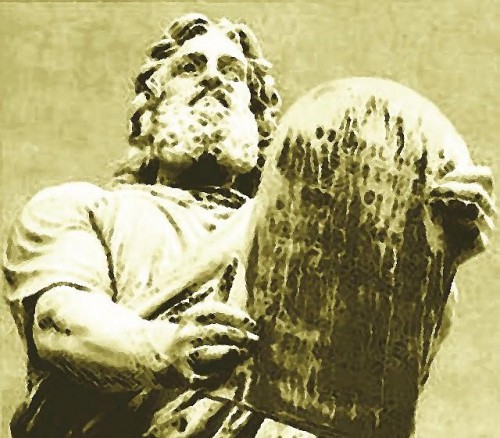
Edouard RIX
Ex: http://www.counter-currents.com/
Translated by Greg Johnson
According to this conception, which can be reconstructed through the comparison of documents from the majority of ancient Indo-European societies, any organization, from the cosmos to any human group, requires for its existence three hierarchical types of action, that I propose to call the three fundamental functions: (1) mastery of the sacred and knowledge and the form of temporal power founded upon it, (2) physical force and warlike valor, and (3) fruitfulness and abundance with their conditions and consequences.[1]
On the social plane, one finds this tripartition in the whole Indo-European realm, from India to Ireland, the three functions corresponding schematically to the priest-kings, the warriors, and finally to the producers, peasants, and craftsmen. In traditional India, the Brahmins correspond to the first function, the Kshatriyas to the second, and the Vaishyas to the third. According to Julius Caesar, in the extreme west of the Indo-European realm, Celtic society was composed of Druids, of Equites or Knights, and Plebs, the people.
In ancient Greece, however, there had been a tendency quite early on to eliminate any trace of the trifunctional ideology. According to Dumézil, “Greece is not helpful to our case. Mr. Bernard Sergent made a critical assessment of the expressions of the trifunctional structure, isolated most of the time in the process of fossilization, that one might recognize there: it is next to nothing compared with the wealth offered by India and Italy.”[2] However, an attentive reader of the works of Plato can find proof there of the survival of functional tripartition in traditional Greece.
The Platonic Ideal City
In the Republic, Plato discusses the ideal city, affirming that “the classes that exist in the City are the very same ones that exist in the soul of each individual.”[3] According to Plato’s analysis of human nature, the human soul has three parts: reason, located in the head, which enables us to think; feeling, located in the heart, that enables us to love; and desire, located in the belly, that drives us to sustain ourselves and reproduce. Each part of the soul has its own specific virtue or excellence: wisdom, courage, and temperance. Justice is the proper relationship of the three parts. According to Plato, the constitution of the city is merely the constitution of the soul writ large.
Concretely, the philosopher distinguishes three functions within the city. First, “those who watch over the City as a whole, enemies outside as well as friends within,”[4] the guardians, who correspond to the head, seat of intelligence and reason, the Logos. Then, the “auxiliaries and assistants of the decisions of the rulers,”[5] who correspond to the heart, seat of courage, Thymos. Finally the producers, craftsmen and peasants, who correspond to the belly, seat of the appetites. “You who belong to the City,” Plato explains, “are all brothers, but the god, in creating those among you able to govern, mixed gold in their material; this is why they are the most valuable. He mixed silver into those who are able to be auxiliaries, and as for the rest, the farmers and craftsmen, he mixed in iron and bronze.”[6]
Plato emphasizes that, “A city seems to be just precisely when each of the three natural groups present in it performs its own task.”[7] Indeed, just as an individual must subject his stomach to his heart, and his heart to his reason, the crafts must be subjected to the art of the warriors, who themselves must be subjected to the magistrates, i.e., to politics—this last being inseparable from philosophy, for the magistrates must become philosophers.
Plato also distinguishes three kinds of political regimes, each of which is related to the one of the functions of the city and by extension with one of the parts or faculties of the human soul. Regimes ruled by reason include monarchy, government by one man, and aristocracy, or government by the best. “Timocracy” is Plato’s term for government by warriors, which is ordered by the noble passions of the heart. Regimes ruled by the lowest passions of the human soul and material appetites include oligarchy, or rule by the rich; democracy, or rule by the majority; and tyranny, the rule of one man who follows appetite, not reason.
Without a doubt, this Platonic ideal city resting on three strictly hierarchical classes, reproduces the traditional Indo-European tri-functional organization of society. Indeed, in Greece which completely seems to have forgotten tripartition, Plato entrusts the political life of the city to philosopher-kings, the guardians, assisted by a military caste, the auxiliaries, who reign over the lower classes, the producers.
Plato is convinced that only the guardians, i.e., the sages, have the capacity to use reason equitably for the community good, whereas ordinary men cannot rise above their personal passions and interests. On the other hand, the members of the ruling caste must lead an entirely communal life, without private property or family, as well as many elements of egoistic temptation, division, and, ultimately, corruption. “Among them, no good will be private property, except the basic necessities,” decrees the philosopher, who recommends, moreover, “that they live communally, as on a military expedition,” and who among the inhabitants of the city “they are the only ones who have no right to have money or gold, or even to touch them; they are the only ones forbidden to enter private homes, wear ornaments, or drink from silver and gold containers.”[8]
“Because,” he adds, “as soon as they privately own land, a dwelling, and money, they will become administrators of their goods, cultivators instead of being the guardians of the city, and instead of being the defenders of the other citizens, they will become their tyrants and enemies, hated and hating in turn, and they will pass their lives conspiring against the others and will become the objects of conspiracy, and they will often be more afraid of their interior enemies than those outside, bringing themselves and the whole city to ruin.”[9] Moreover, their children will be removed at birth in order to receive a collective military education.
This “Platonic communism,” a virile and ascetic communism that has nothing to do with the Messianic nightmares of Marx and Trotsky, is not unrelated to the national communitarianism of Sparta. As Montesquieu put it with some justice, “Plato’s politics is nothing more than an idealized version of Sparta’s.”
Notes
1. G. Dumézil, L’oubli de l’homme et l’honneur des dieux et autres essais. Vingt-cinq esquisses de mythologies (Paris: Gallimard, 1985), p. 94.
2. Ibid, p.13.
3. Platon, La République (Paris: Flammarion, 2008), p. 262.
4. Ibid, p. 199.
5. Ibid, p. 200.
6. Ibid, p. 201.
7. Ibid, p. 245.
8. Ibid, p. 205.
9. Ibid, pp. 205–206.
Source: Réfléchir & Agir, Winter 2009, no. 31.